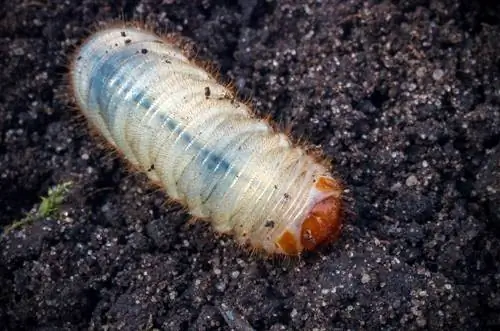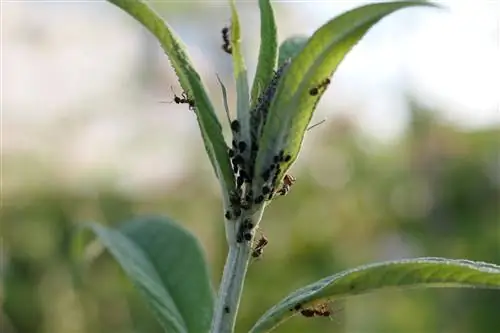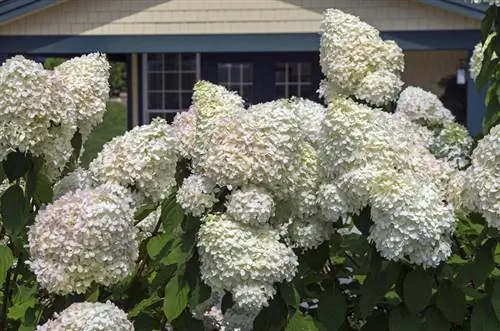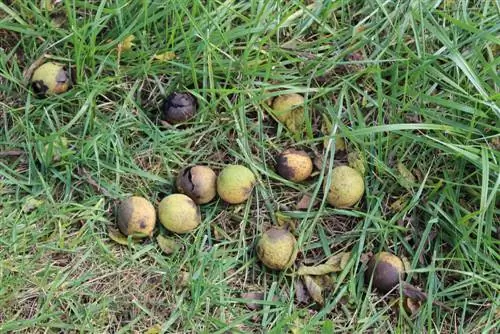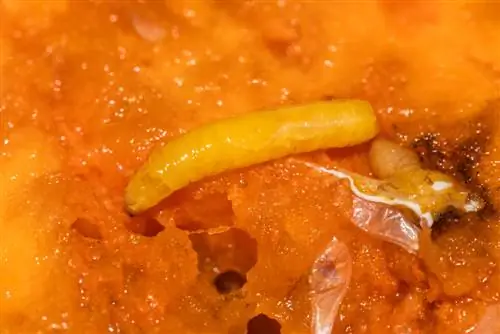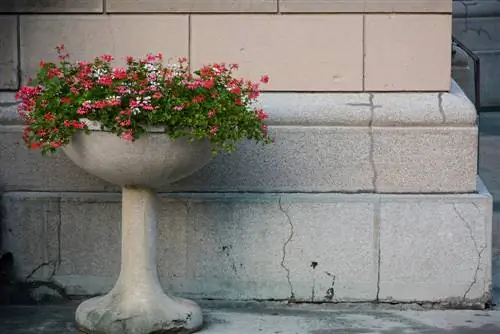- Author admin [email protected].
- Public 2023-12-16 16:46.
- Last modified 2025-01-23 11:22.
If potted plants no longer want to grow properly and look a bit miserable even without detectable above-ground pest infestation, underground culprits are usually at work. Anyone who digs around in the substrate will often find them in the form of maggot-like looking fellows.
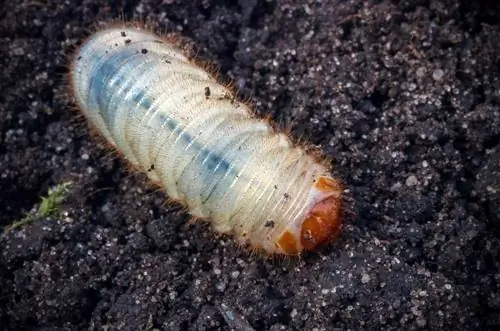
What pests cause large maggots in flower pots?
Large grubs in flower pots can be grubs or black weevil larvae that eat plant roots and damage potted plants. Infected plants should be removed from the pot, pests removed and, if the roots are narrow, predatory nematodes should be used.
What kind of maggots could these be?
There are countless species of insects that lay their eggs in the ground, where the larvae can then feed and develop themselves after hatching. We will now focus our attention on species that can cause serious damage to your potted plants - because you generally don't need to worry about the rest.
If you come across large, white, worm-like animals in the substrate when looking for the cause of troublesome potted plants, they are most likely not maggots, but rather larvae of certain types of beetles. Maggots form a special group within the insect larvae: They are characterized by a very poorly developed, naked body appearance without any limbs; they do not even have a head capsule.
Are the dubious inhabitants of your flower pot large, thick-fleshed, whitish with darker front (and back) parts and possibly 3 pairs of breastbones? Then you are probably dealing with the following pests:
- Grubs
- Larvae of black weevils
Grubs
The larvae of the beetle superfamily Scarabaeoidea are called grubs. Species relevant in our latitudes are primarily May, June and garden leaf beetles. Their larvae feed on the roots of living plants and can cause damage to lawns, bedding plants and even potted plants.
Black weevil larvae
The larvae of black weevils are not grubs, but neither are they grubs. The black weevil, which belongs to the weevil family, is a common and therefore feared pest in agriculture and private gardening. Unfortunately, in addition to dead plant material, it also eats the roots of living plants.
What to do?
The first thing you should do if you have a potted plant infested with grubs or black weevil larvae is to remove it from the planter and search the soil for the pests. Search as thoroughly as possible and collect the guys. If the infestation is severe and the plants have dense roots, you can use the water jet from your garden hose and, if necessary, rinse the roots completely free.
If the root system is very difficult because it is too narrow, you can also use predatory nematodes (€12.00 on Amazon). The parasitic nematodes colonize grubs and black weevil larvae and thereby kill them.

